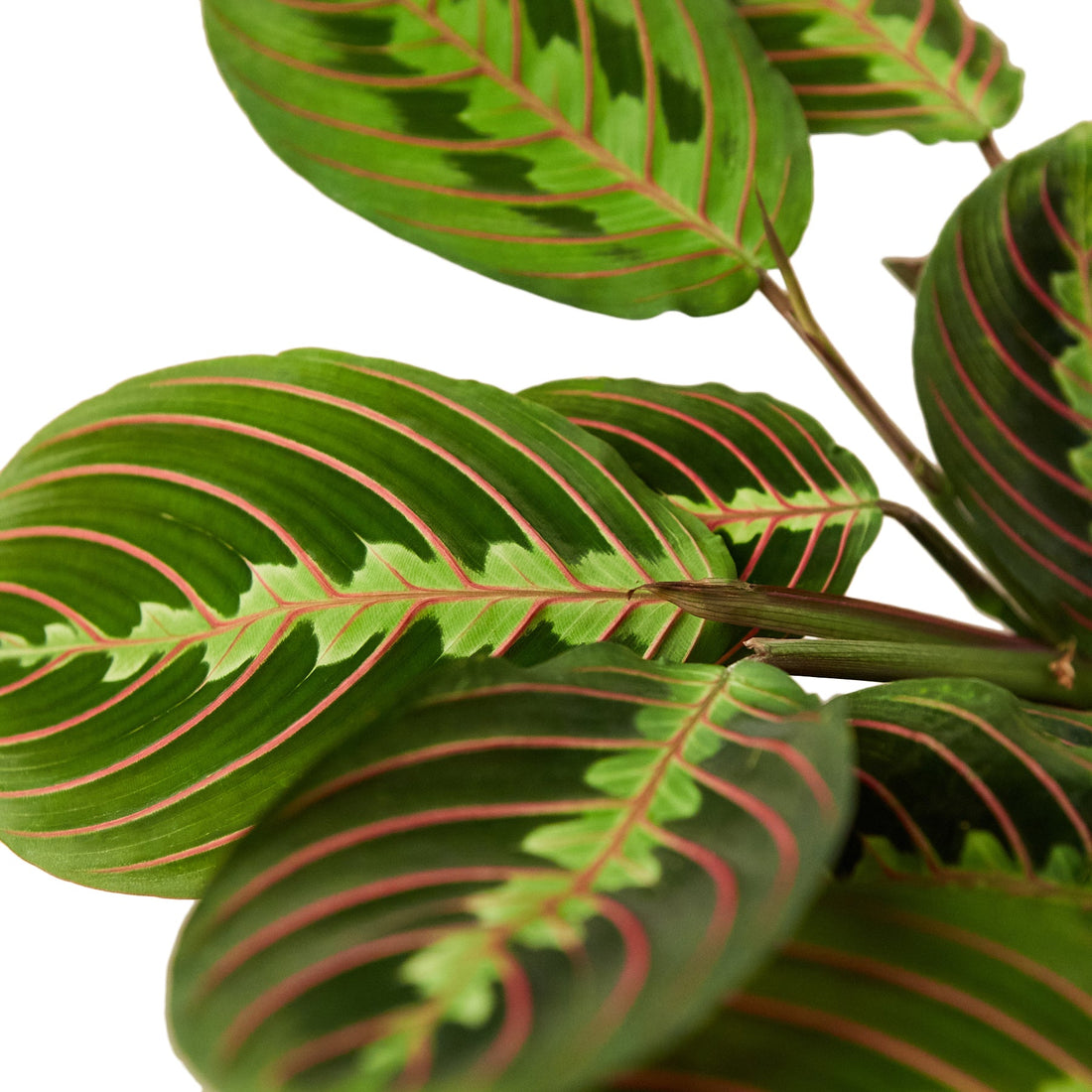
Ultimate Care Guide for Maranta Red Prayer Plant
Share
The Maranta Red Prayer Plant, known for its striking red-veined leaves and unique folding behavior at night, is a popular choice among houseplant enthusiasts. This guide will cover all aspects of caring for your Maranta Red Prayer Plant to ensure it thrives in your home.

Table of Contents
- Introduction
- Background of the Maranta Red Prayer Plant
- Light Requirements
- Watering
- Humidity and Temperature
- Soil and Potting
- Fertilization
- Pruning and Maintenance
- Common Problems and Solutions
- Frequently Asked Questions
- Conclusion
Introduction
The Maranta Red Prayer Plant (Maranta leuconeura) is admired for its decorative foliage and interesting nocturnal movements. Its leaves fold up in the evening, resembling praying hands, which is why it’s commonly known as the Prayer Plant. This tropical plant adds a touch of nature and elegance to any indoor space.
Background of the Maranta Red Prayer Plant
Native to the tropical rainforests of Brazil, the Maranta Red Prayer Plant belongs to the Marantaceae family. It is a low-growing perennial that thrives in warm, humid environments. The plant is named after Bartolomeo Maranta, an Italian physician and botanist.
Light Requirements
Optimal Light Conditions
The Maranta Red Prayer Plant prefers bright, indirect light. Direct sunlight can scorch its delicate leaves, while too little light can result in slower growth and less vibrant colors. Place the plant near an east or north-facing window where it can receive filtered light.
Adaptability
This plant can adapt to lower light conditions, but for best results, ensure it gets adequate indirect light to maintain its vibrant leaf colors.
Watering
Frequency
Keep the soil consistently moist but not waterlogged. Water your Maranta Red Prayer Plant when the top 1-2 inches of soil feel dry to the touch. Overwatering can lead to root rot, so be cautious not to let the plant sit in water.
Method
Water thoroughly until water drains out of the bottom of the pot, ensuring even moisture distribution. Reduce watering frequency during the winter months when the plant’s growth slows down.
Humidity and Temperature
Humidity
Maranta Red Prayer Plants thrive in high humidity environments. Aim for humidity levels above 60%. If your home has dry air, especially during winter, consider using a humidifier or placing a pebble tray with water near the plant to increase humidity.
Temperature
Maintain a temperature range between 65°F and 75°F (18°C - 24°C). Avoid placing the plant near cold drafts, heating vents, or air conditioners, as temperature fluctuations can stress the plant.
Soil and Potting
Soil Type
Use a well-draining potting mix rich in organic matter. A blend of peat moss, perlite, and potting soil works well. This mixture retains moisture without becoming waterlogged.
Repotting
Repot your Maranta Red Prayer Plant every 2-3 years or when it outgrows its current pot. Choose a pot that is 1-2 inches larger in diameter to provide room for growth.
Fertilization
Frequency
Feed your Maranta Red Prayer Plant with a balanced, water-soluble fertilizer every 4-6 weeks during the growing season (spring and summer). Reduce fertilization during fall and winter when the plant’s growth slows.
Application
Dilute the fertilizer to half the recommended strength to prevent over-fertilizing, which can lead to salt buildup in the soil.
Pruning and Maintenance
Pruning
Prune your Maranta Red Prayer Plant to maintain its shape and encourage bushier growth. Remove any yellowing or dead leaves to keep the plant healthy and attractive.
Maintenance
Regularly clean the leaves with a damp cloth to remove dust and help the plant photosynthesize more effectively. This also prevents pest infestations.
Common Problems and Solutions
Yellowing Leaves
Cause: Overwatering or poor drainage. Solution: Check soil moisture and drainage. Adjust watering schedule and ensure the pot has drainage holes.
Leaf Curling
Cause: Low humidity or underwatering. Solution: Increase humidity and ensure consistent watering. Use a humidifier or mist the plant regularly.
Pests
Common Pests: Spider mites, aphids, and mealybugs. Solution: Treat infestations with insecticidal soap or neem oil. Regularly inspect your plant to catch problems early.
Frequently Asked Questions
How often should I water my Maranta Red Prayer Plant?
Water your Maranta Red Prayer Plant when the top 1-2 inches of soil are dry. This usually means watering every 1-2 weeks, but it can vary depending on the humidity and temperature of your home.
Can I grow my Maranta Red Prayer Plant outdoors?
Maranta Red Prayer Plants can be grown outdoors in USDA zones 10-11. They prefer a humid, shaded environment and should be protected from direct sunlight and strong winds.
Why are the leaves on my Maranta Red Prayer Plant turning brown?
Brown leaf edges can be a sign of low humidity, underwatering, or exposure to direct sunlight. Adjust your care routine accordingly to address the issue.
Conclusion
The Maranta Red Prayer Plant is a stunning addition to any indoor garden, known for its unique behavior and vibrant foliage. By providing the right balance of light, water, humidity, and occasional feeding, your Maranta Red Prayer Plant will thrive and add a touch of tropical beauty to your home.
With patience and attention, you’ll be rewarded with a healthy, thriving plant that will continue to captivate and inspire. Happy gardening!
For more plant care tips and gardening guides, visit Garden Wrld. Share your Maranta Red Prayer Plant success stories with us on social media!
